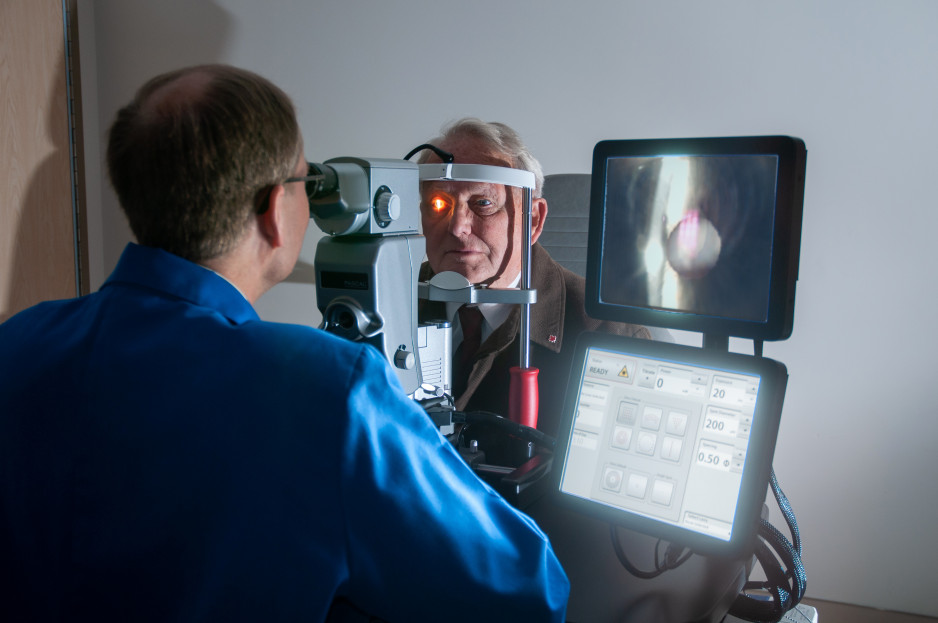Protecting our most precious gift – our ability to see
Delicate and intricately complex, it’s essential for vision. It’s also a common culprit in the loss of that gift. The retina contains millions of cells that work together to detect light and communicate with the brain. But aging and various health conditions can lead to retina complications that can cause vision loss if left untreated. Over the last decade, the number of patients needing retina care at St. Joseph’s Ivey Eye Institute has increased 50 per cent – a trend that’s expected to continue as Canada’s population ages.
Faced with rising demand for retina care, Ivey Eye reached out to St. Joseph’s Health Care Foundation with a proposal to expand its Retina Care Program space. Last year the foundation launched a campaign to raise funds needed for the renovation and hundreds of generous donors stepped up to the challenge, contributing more than $560,000.
“As an ophthalmologist and surgeon at the Ivey Eye Institute, it’s an incredible feeling to know how much the community stands behind the care we provide,” says Dr. Tom Sheidow. “Many retina issues can be treated or reversed if we catch them early enough – and donor contributions will help make that possible.”
Renovations to convert existing office space into four, new retina exam rooms will begin this summer. Each room will be outfitted with the latest diagnostic equipment and a new waiting area will provide a comfortable place for patients and caregivers to sit and relax. For people living with retinal issues, these changes will ensure timely access to care, less waiting and the best possible outcomes.
The newly expanded space will give researchers the ability to trial treatments for diseases like dry age-related macular degeneration (AMD). More than 80 per cent of patients with AMD have a ‘dry’ form of the disease, which currently has no treatment options.
The Retina Care Program treats various complications, including age-related macular degeneration (AMD):
When the central part of the retina deteriorates, it results in blurriness in the centre of vision. AMD affects up to one third of people over age 75 and is the leading cause of vision loss for those age 50 and older. Regular injections can stop the progression of “wet” AMD that causes leaky blood vessels.
Retinal Tears:
A tear occurs when the retina partially pulls away from the back of the eye, requiring immediate attention. Ophthalmologists are able to repair these tears using a laser to prevent permanent vision loss.”
Diabetic Retinopathy:
This complication of diabetes occurs due to fluctuations in blood glucose levels impacting the health of the blood vessels in the retina. It’s the leading cause of blindness for people age 25 to 75, but laser treatment and injections can prevent blood vessel leakage, growth and repair some of the damages.”
